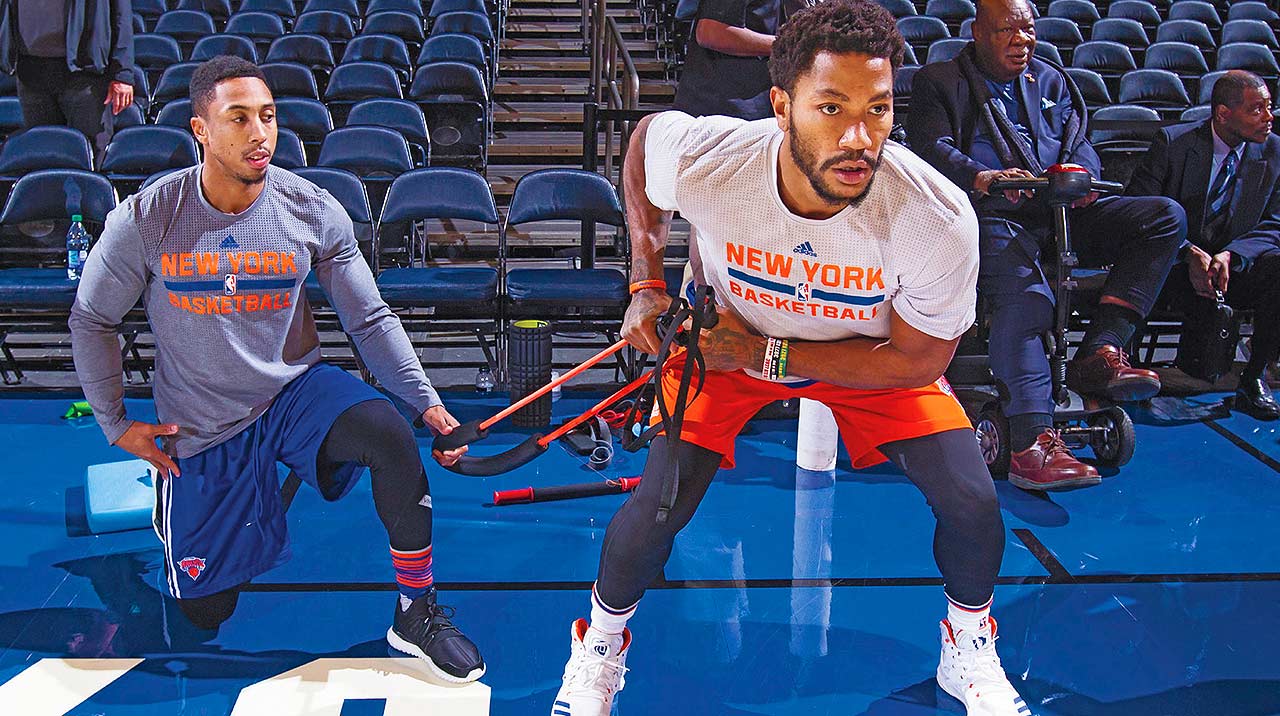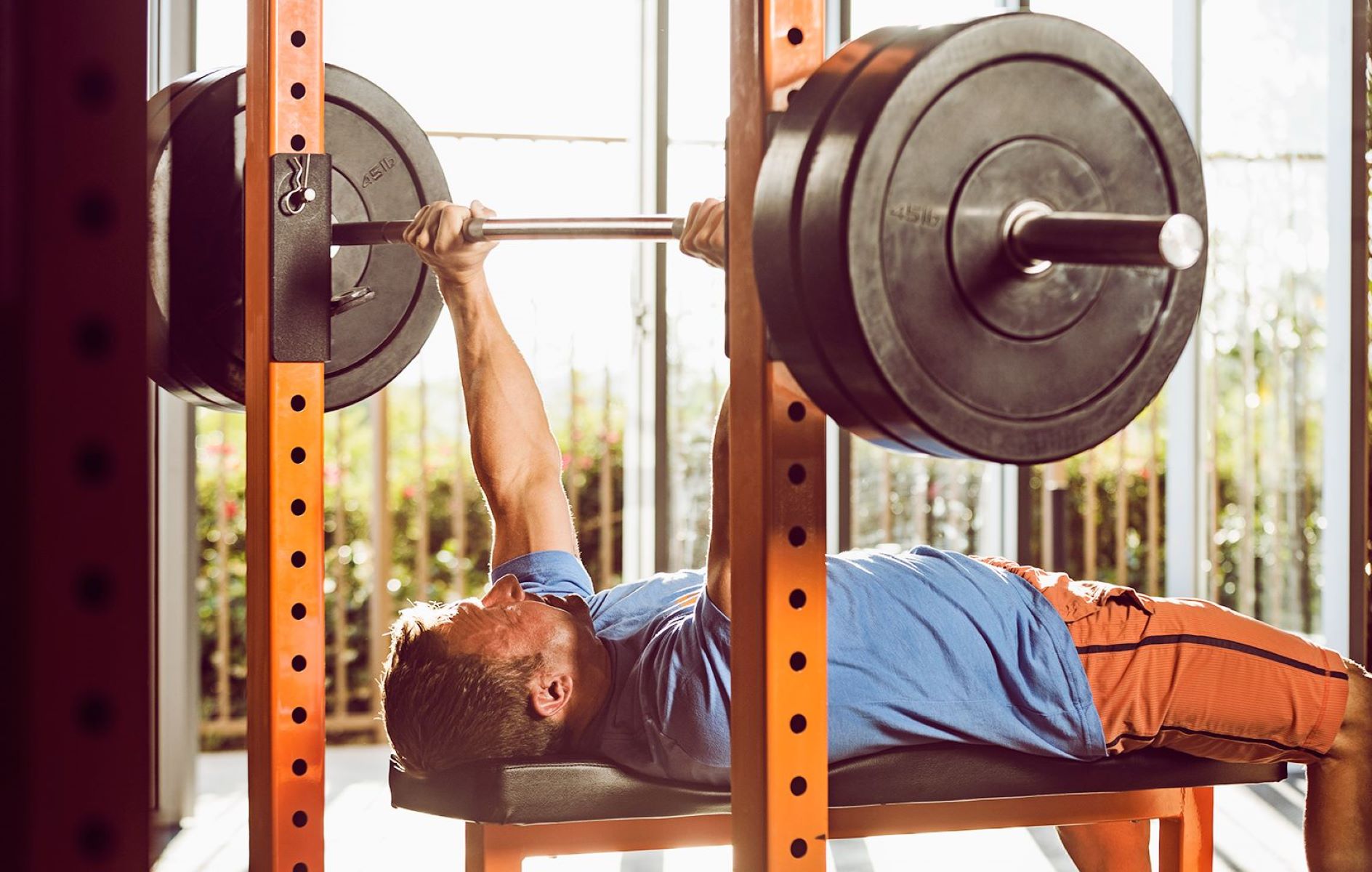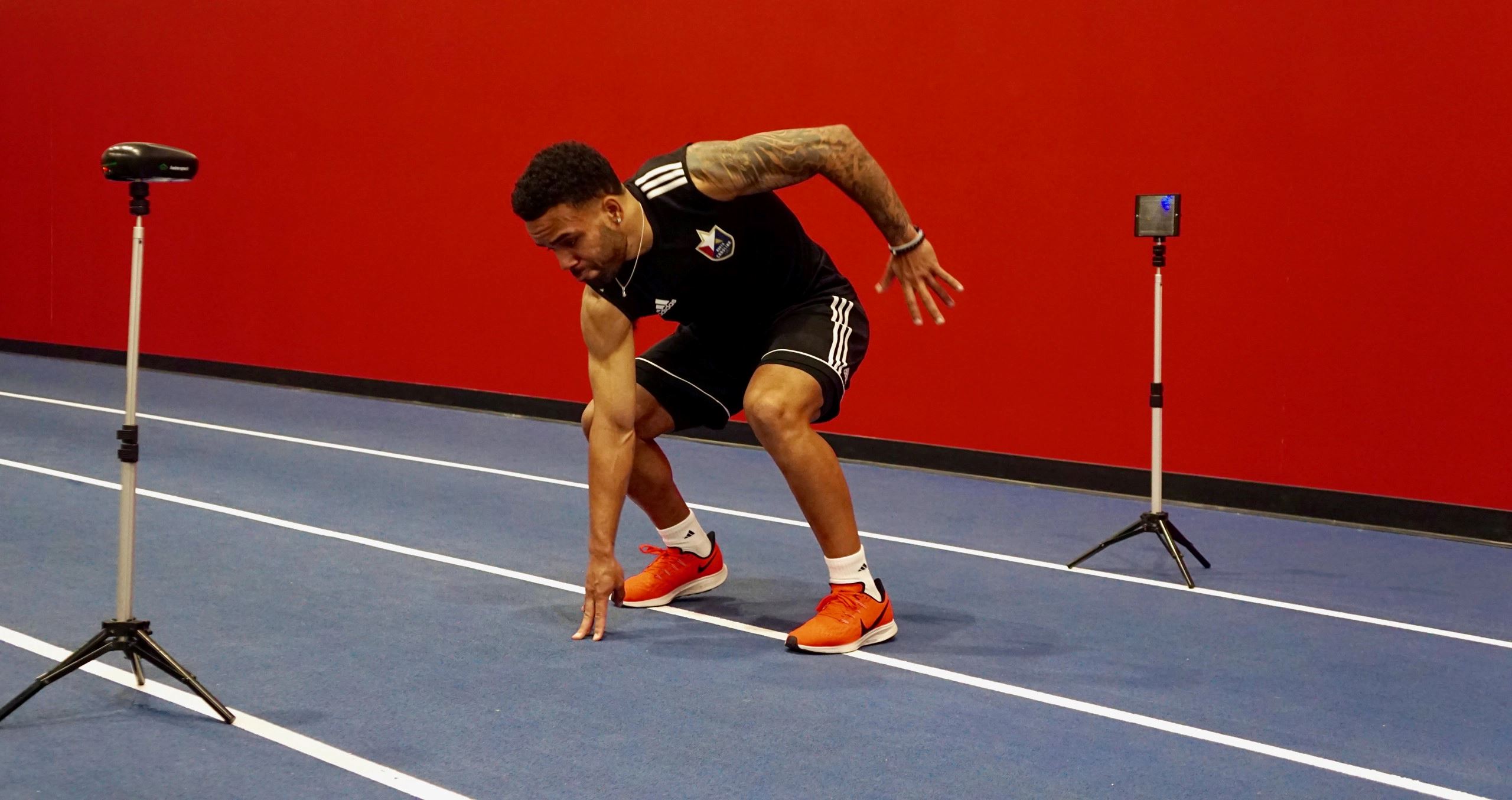

Featured
How To Build Up Stamina For Basketball
Modified: January 22, 2024
Featured: Learn effective strategies to build up your stamina for basketball and stay ahead on the court with our comprehensive guide.
Introduction
Basketball is a high-intensity sport that requires exceptional physical conditioning. One key aspect of basketball performance is stamina – the ability to sustain prolonged physical exertion without fatigue. Building up stamina is essential for basketball players to maintain peak performance throughout games and stay competitive until the final buzzer.
Stamina is not only crucial for endurance but also impacts other important aspects of the game, such as speed, agility, and decision-making. Players with higher stamina can run faster, react quicker, and maintain their focus for extended periods. Whether you’re a professional athlete or a weekend warrior, improving your stamina can significantly enhance your basketball skills.
To understand the role of stamina in basketball, it’s important to recognize that the game is fast-paced, with frequent changes in direction, explosive movements, and intense bursts of running and jumping. Players need to be able to sprint up the court, defend opponents, and execute skillful maneuvers without running out of gas.
Building stamina is a gradual process that requires consistency, dedication, and a comprehensive approach. It involves a combination of proper nutrition, a well-designed workout routine, cardiovascular exercises, interval training, plyometric exercises, rest, and recovery. By following these principles, players can maximize their stamina, perform at their best, and outlast opponents.
In this article, we will explore the importance of stamina in basketball and provide practical tips on how to build it up effectively. We will discuss the role of stamina in the game, the basic principles for building stamina, proper nutrition for improved endurance, designing a stamina-building workout routine, incorporating cardiovascular exercises, interval training techniques, plyometric exercises for explosive stamina, rest and recovery strategies, as well as monitoring progress and adjusting the training plan.
Importance of Stamina in Basketball
In the fast-paced and physically demanding sport of basketball, stamina plays a crucial role in success on the court. Stamina refers to the ability to sustain prolonged physical exertion without experiencing exhaustion or a decline in performance. It directly impacts a player’s endurance, speed, agility, and overall stamina.
One of the primary reasons stamina is essential in basketball is the continuous motion and high-intensity nature of the game. Players are required to constantly be on the move, sprinting down the court, defending opponents, and executing quick and explosive movements. Without adequate stamina, players can experience fatigue, leading to slower reaction times, decreased speed, and diminished decision-making abilities.
Furthermore, basketball games are typically fast-paced, with quick transitions from offense to defense and vice versa. Players need to be able to maintain their physical intensity throughout the entire game, as well as during overtime periods, if applicable. A lack of stamina can lead to decreased performance in crucial moments, making it more challenging to execute plays effectively and contribute to the team’s overall success.
In addition to physical aspects, stamina also has a psychological impact on players. When players are fatigued, it can have a negative impact on their mental focus and concentration, affecting their ability to make strategic decisions and perform at their peak. Having high levels of stamina enables players to stay mentally sharp, make quick decisions, and maintain a competitive edge.
Moreover, basketball is a team sport, and stamina is critical for maintaining team dynamics and coordination. When individual players become tired or unable to keep up with the pace of the game, it puts additional pressure on their teammates. Strong stamina allows players to effectively fulfill their roles and contribute to a cohesive and successful team performance.
In summary, stamina is of utmost importance in basketball due to its impact on endurance, speed, agility, decision-making, mental focus, and overall team dynamics. By improving stamina, players can perform at their best, maintain a high level of intensity throughout the game, and maximize their contributions to the team’s success.
Understanding the Role of Stamina
In the context of basketball, stamina refers to the body’s ability to withstand and sustain prolonged physical exertion throughout a game or practice session. It plays a vital role in a player’s overall performance and is crucial for success on the court.
One of the primary functions of stamina in basketball is to provide the energy required for continuous movement. The sport involves constant running, jumping, and changing direction, all of which demand a significant amount of energy. Players with strong stamina can maintain a high level of activity for longer periods, allowing them to outlast opponents and stay in the game without experiencing fatigue.
Stamina also affects a player’s speed and agility. Basketball is a game of quick movements and fast transitions, where the ability to accelerate and change direction rapidly is essential. When players are fatigued, their speed and agility decrease, making it more challenging to keep up with the pace of the game and react to fast-paced situations.
Furthermore, stamina plays a critical role in a player’s decision-making abilities. When players are physically tired, their cognitive functions can be impaired, leading to slower reaction times and diminished focus. In contrast, players with higher stamina can make quick and accurate decisions, allowing them to respond effectively to game situations and maintain a competitive advantage.
In addition to the physical and cognitive aspects, stamina also affects a player’s mental resilience. Basketball is a sport where momentum can shift rapidly, and players need to stay mentally strong and focused, even during challenging times. A player with strong stamina is more likely to maintain composure and perform at a high level, even when facing pressure or adversity.
Understanding the role of stamina in basketball highlights its importance in all aspects of the game. From physical endurance to speed, agility, mental focus, and decision-making, stamina plays an integral role in a player’s performance and the overall success of the team. By recognizing the significance of stamina, players can prioritize its development and take proactive steps to improve their endurance and overall game performance.
Basic Principles for Building Stamina
Building stamina for basketball requires a systematic approach that incorporates various principles to efficiently enhance endurance and physical performance. By following these basic principles, players can progressively improve their stamina and withstand the demands of the game.
1. Gradual Progression: When building stamina, it is essential to start gradually and increase the intensity and duration of workouts over time. Pushing too hard, too soon can lead to injury and burnout. Begin with moderate-intensity exercises and gradually build up intensity and duration as your body adapts and becomes more resilient.
2. Consistency: Consistency is key to build stamina effectively. Regularly engage in stamina-building activities to maintain a steady progression. Consistent training sessions will help improve endurance and ensure long-term results.
3. Variety of Exercises: Incorporate a variety of exercises to challenge different muscle groups and energy systems. This variety helps in building overall endurance and prevents plateauing. Include activities such as running, cycling, swimming, and circuit training in your regimen.
4. Interval Training: Interval training is a highly effective method for improving stamina. Alternate between high-intensity bursts of exercise and periods of active recovery. This type of training challenges both aerobic and anaerobic systems and helps improve both endurance and speed.
5. Progressive Overload: To continuously improve stamina, it’s important to progressively overload the body by increasing the difficulty or intensity of workouts over time. Gradually increase the duration or intensity of exercises to keep challenging your body and stimulate further adaptation.
6. Cross-Training: Engaging in other sports or activities that complement basketball can also contribute to building stamina. Cross-training helps in developing different muscle groups and prevents overuse injuries. Consider activities like swimming, cycling, or playing other team sports to enhance overall fitness levels.
7. Rest and Recovery: Adequate rest and recovery are just as important as training itself. Allow your body time to recover and repair after strenuous workouts. This helps prevent overtraining and reduces the risk of injury. Incorporate rest days into your training schedule and prioritize quality sleep.
8. Proper Nutrition: Proper nutrition plays a vital role in building stamina. Fuel your body with a balanced diet that includes carbohydrates for energy, protein for muscle repair, and essential vitamins and minerals. Stay hydrated and consume nutrient-rich foods to support overall performance.
By adhering to these basic principles, basketball players can optimize their stamina-building efforts and achieve significant improvements in endurance and overall performance on the court.
Proper Nutrition for Improved Stamina
Proper nutrition plays a crucial role in building stamina and improving overall performance in basketball. A well-balanced diet provides the necessary fuel, nutrients, and hydration to support the body’s energy demands and enhance endurance. Here are key nutritional guidelines to consider for improved stamina:
1. Adequate Caloric Intake: Ensure you consume enough calories to meet the energy requirements of basketball training and games. Caloric needs vary based on factors such as age, weight, height, and activity level. Consult with a nutritionist to determine your specific caloric needs and adjust your intake accordingly.
2. Carbohydrates for Energy: Carbohydrates are the primary source of fuel for high-intensity exercise. Include complex carbohydrates, such as whole grains, fruits, vegetables, and legumes, in your diet. These provide a steady release of energy throughout the day and support sustained physical activity.
3. Protein for Muscle Repair: Protein is essential for muscle repair and recovery. Include lean sources of protein, such as chicken, fish, lean meats, legumes, and dairy products, in your meals to support muscle development and reduce muscle fatigue. Aim for a balance of protein throughout the day.
4. Hydration: Proper hydration is critical for maintaining stamina and preventing dehydration. Drink water regularly throughout the day and during training sessions and games. Thirst is not always a reliable indicator of hydration, so aim to stay consistently hydrated and monitor the color of your urine as an indicator of proper hydration.
5. Essential Nutrients: Ensure your diet includes a variety of fruits and vegetables to provide essential vitamins, minerals, and antioxidants. These nutrients support overall health, immune function, and recovery. Consider incorporating foods rich in iron, such as leafy greens and lean meats, to support the oxygen-carrying capacity of the blood.
6. Pre- and Post-Workout Snacks: Consume a small snack or meal containing carbohydrates and protein before and after training sessions or games. This helps replenish glycogen stores and aids in muscle recovery. Options include a banana with a handful of nuts, yogurt and fruit, or a turkey and avocado sandwich on whole-grain bread.
7. Timing of Meals: Pay attention to the timing of your meals and snacks. Eat a balanced meal about two to three hours before a training session or game to provide sustained energy. Additionally, consume a post-workout meal or snack within 30 minutes to maximize recovery and muscle repair.
Remember, nutrition is individualized, and what works for one person may not work for another. Experiment with different approaches to find what works best for your body and consult with a registered dietitian or sports nutritionist for personalized guidance.
By fueling your body with the right nutrients, staying hydrated, and timing your meals appropriately, you can optimize your stamina and elevate your performance on the basketball court.
Designing a Stamina-Building Workout Routine
When it comes to building stamina for basketball, a well-designed workout routine is essential. A structured and progressive training plan can help improve endurance, enhance cardiovascular capacity, and build the stamina needed to excel on the court. Here are key considerations for designing a stamina-building workout routine:
1. Warm-Up: Start each workout with a dynamic warm-up to prepare your body for activity. Incorporate exercises like jogging, high knees, butt kicks, and leg swings to increase blood flow, loosen up muscles, and activate the cardiovascular system.
2. Cardiovascular Exercises: Cardiovascular exercises are crucial for increasing stamina. Include activities like running, cycling, swimming, or using the elliptical machine in your routine. Aim for at least three to four sessions per week, gradually increasing the duration and intensity over time.
3. Interval Training: Incorporate interval training into your routine to improve both aerobic and anaerobic fitness. Alternate between periods of high-intensity exercise and active recovery. For example, sprint for 30 seconds and then jog or walk for 60 seconds. Repeat these intervals for a set amount of time or number of repetitions.
4. Circuit Training: Circuit training combines cardiovascular and strength exercises, effectively challenging both endurance and muscular strength. Create a circuit by selecting exercises that target different muscle groups and perform them in rapid succession with minimal rest in between sets. This type of training helps simulate game-like conditions and builds stamina while improving overall body strength.
5. Plyometric Exercises: Incorporate plyometric exercises to develop explosive power and endurance. Jumping exercises like box jumps, squat jumps, and lateral bounds are excellent for building lower body strength and enhancing overall stamina. Begin with lower-intensity plyometric exercises and gradually progress to more advanced variations.
6. Sport-Specific Drills: Incorporate basketball-specific drills into your training routine to simulate game-like conditions. Include activities like dribbling drills, shooting drills, defensive drills, and fast-paced scrimmages. This not only improves basketball skills but also helps improve endurance and stamina in a sport-specific context.
7. Cross-Training: Consider incorporating cross-training activities to create a well-rounded workout routine. Engage in activities like swimming, cycling, or playing other sports. Cross-training helps build overall fitness, prevents overuse injuries, and provides a mental break from basketball-specific training.
8. Recovery and Rest: Schedule recovery days into your training routine to allow your body to rest and repair. Recovery is crucial for reducing the risk of injuries and optimizing performance. Listen to your body and adjust the intensity or duration of workouts accordingly to prevent overtraining.
Remember to gradually progress your training routine by increasing the intensity, duration, or complexity of exercises over time. Consult with a qualified strength and conditioning coach to help design a tailored program based on your fitness level, goals, and individual needs.
By following a well-structured stamina-building workout routine, you can effectively improve endurance, elevate your overall fitness, and enhance your performance on the basketball court.
Incorporating Cardiovascular Exercises
Cardiovascular exercises are a crucial component of any stamina-building workout routine for basketball. These exercises help improve cardiovascular endurance, boost lung capacity, and enhance the body’s ability to utilize oxygen efficiently. Incorporating cardiovascular exercises into your training regimen can significantly enhance your stamina on the basketball court. Here are some key considerations for incorporating cardiovascular exercises:
1. Running: Running is one of the most effective cardiovascular exercises for building stamina. It closely mimics the demands of basketball, including the running, sprinting, and change of direction involved in the game. Start with moderate-intensity steady-state runs and gradually increase the duration and intensity to challenge your cardiovascular system and improve endurance. Incorporate interval training by alternating between fast-paced sprints and recovery jogs to further enhance stamina.
2. Cycling: Cycling is a low-impact cardiovascular exercise that can be easily adjusted to meet different fitness levels. Whether you prefer outdoor cycling or indoor stationary cycling, it provides an excellent opportunity to improve aerobic fitness and leg strength. Vary the intensity by incorporating interval training, hill climbs, and fast-paced cycling sessions to challenge your cardiovascular system and build endurance.
3. Swimming: Swimming is a full-body workout that provides a low-impact cardiovascular option for athletes looking to improve stamina. It engages all major muscle groups and increases lung capacity, making it an effective way to build endurance. Incorporate different swimming strokes, such as freestyle, backstroke, and butterfly, to challenge different muscle groups and add variety to your cardiovascular routine.
4. High-Intensity Interval Training (HIIT): HIIT is a time-efficient and effective method for improving cardiovascular fitness. HIIT involves short bursts of high-intensity exercise followed by periods of active recovery. This type of training stimulates both aerobic and anaerobic energy systems, helping to improve endurance and speed. Incorporate exercises like burpees, jumping jacks, mountain climbers, and squat jumps into your HIIT routine to challenge your cardiovascular system and build stamina.
5. Basketball-Specific Drills: While traditional cardiovascular exercises are beneficial for building stamina, incorporating basketball-specific drills can make your training more game-specific. Engage in activities like dribbling drills, shooting drills, or fast-paced drills that simulate game-like conditions. These drills not only improve basketball skills but also facilitate the development of cardiovascular endurance specific to the demands of the sport.
6. Frequency and Progression: Aim to include cardiovascular exercises at least three to five times per week in your training routine. Start with manageable durations and gradually increase the time or level of intensity as your stamina improves. Monitor your progress and adjust your workouts accordingly to continue challenging your cardiovascular system and making progress.
Remember to warm up properly before starting any cardiovascular exercise and cool down afterward to prevent injuries and aid in recovery. Stay hydrated throughout your workouts and listen to your body to prevent overexertion or fatigue.
By incorporating a variety of cardiovascular exercises into your training routine, you can systematically improve your stamina, endurance, and overall cardiovascular fitness for better performance on the basketball court.
Interval Training for Increased Endurance
Interval training is a powerful method for improving endurance and boosting stamina for basketball players. This training technique involves alternating between periods of high-intensity exercise and active recovery. By incorporating interval training into your workout routine, you can effectively challenge your cardiovascular system, improve aerobic capacity, and enhance your overall endurance. Here’s how to incorporate interval training for increased endurance:
1. Choose Appropriate Work-to-Rest Ratios: When designing interval training workouts, it’s important to determine the work-to-rest ratios that suit your fitness level and training goals. For starters, a common ratio is 1:1, meaning the intense exercise interval is matched with an equal duration of recovery. As your endurance improves, you can increase the work interval duration or reduce the duration of the recovery period to increase the challenge.
2. Sprint Intervals: Running or sprinting intervals are an effective way to build endurance and speed. Find a safe space such as a track or open field and perform short, intense sprints followed by jogging or walking for recovery. Start with shorter sprint intervals, like 30 seconds, and gradually lengthen the duration as you progress. Aim for a total of 8-10 sprint intervals in each session.
3. Shuttle Runs: Shuttle runs are great for simulating the start-and-stop nature of basketball games. Set up markers or cones at predetermined distances and sprint back and forth between them. Vary the distances and intensity to keep challenging your endurance and provide variety to your training sessions.
4. Treadmill Intervals: Utilizing a treadmill for interval training allows for precise speed and incline control. Perform high-intensity sprints at challenging speeds for a set duration (e.g., 30 seconds) and recover at a slower pace by decreasing the speed and/or incline. Experiment with different speed and incline variations to tailor the workout according to your fitness level and specific training goals.
5. Circuit Training: Incorporating dynamic circuits that combine strength and cardiovascular exercises can provide a total-body workout while improving endurance. Select a series of exercises such as burpees, jump squats, mountain climbers, and jumping lunges, and perform each exercise for a designated time or number of repetitions. Take short rests in between exercises and repeat the circuit for multiple rounds.
6. Tabata Protocol: Tabata training is a popular form of high-intensity interval training. It involves performing an exercise at maximal effort for 20 seconds, followed by 10 seconds of rest, and repeating this cycle for a total of eight rounds. You can choose exercises like burpees, squat jumps, or battle ropes, and repeat the Tabata protocol for multiple exercises to build endurance and improve cardiovascular fitness.
7. Progression and Adaptation: As with any training program, it’s important to progressively challenge yourself and adapt over time. Gradually increase the intensity, duration, or complexity of your interval training workouts to continue pushing your limits and making gains in endurance and stamina.
Remember to warm up and cool down properly before and after each interval training session to reduce the risk of injury and aid in recovery. Stay hydrated, listen to your body, and adjust the intensity or duration of intervals as needed to prevent overexertion or fatigue.
By incorporating interval training into your workout routine, you can effectively enhance your endurance, improve cardiovascular capacity, and develop the stamina needed to perform at your best on the basketball court.
Plyometric Exercises for Explosive Stamina
Plyometric exercises are a valuable addition to any stamina-building workout routine for basketball players. These explosive movements help develop power, speed, and explosiveness, contributing to improved overall stamina on the court. By incorporating plyometric exercises into your training regimen, you can enhance your ability to perform high-intensity movements and sustain explosive efforts. Here are some key plyometric exercises to consider:
1. Box Jumps: Box jumps are excellent for developing lower body power and explosive stamina. Stand in front of a sturdy box or platform, bend your knees, and jump explosively onto the box, landing softly in a squat position. Step down and repeat for a set number of repetitions or duration.
2. Squat Jumps: Squat jumps target the quadriceps, glutes, and calves while improving explosive power. Begin with your feet shoulder-width apart, lower into a deep squat position, and explode upward, pushing off the ground as high as possible. Land softly back into the squat position and repeat.
3. Lateral Bounds: Lateral bounds work on increasing lateral power and agility, which are essential in basketball. Start in a slight squat position with your feet together. Explosively jump to one side, extending your arms for momentum, and land softly on the opposite leg. Repeat the movement to the opposite side, moving as quickly as possible with proper form.
4. Depth Jumps: Depth jumps help improve reactive power and explosive strength. Find a sturdy platform, step off backward, and as soon as you land on the ground, immediately explode upward as high as possible. Ensure proper landing mechanics by aiming for a soft landing and avoiding excessive knee valgus or collapsing. Gradually increase the height of the platform as your proficiency and strength improve.
5. Jump Rope: Jumping rope is a versatile plyometric exercise that can improve footwork, coordination, and cardiovascular endurance. Use a speed rope and jump continuously with good form, focusing on quick and light foot movements. Vary the intensity by incorporating different jump styles, such as double unders or alternating feet.
6. Medicine Ball Throws: Medicine ball throws help develop explosive upper body power, core strength, and stamina. Perform exercises such as medicine ball chest passes, overhead throws, or rotational throws. Use a weight that allows you to maintain proper form while generating maximum power.
7. Multi-Directional Hops: Basketball requires quick changes in direction, and multi-directional hops can help improve agility and explosive stamina. Set up markers or cones in a zigzag pattern and hop quickly from side to side, forwards, and backward. Focus on quick and explosive movements, maintaining proper form throughout.
8. Plyometric Push-Ups: Plyometric push-ups target the upper body and core while improving explosive power. Start in a push-up position, lower your body towards the ground, and as you push up, explode off the ground with enough force to lift your hands off the floor. Land softly and immediately lower your body into the next repetition.
Remember to start with proper form and gradually increase the intensity and complexity of the exercises. It is essential to listen to your body and progress at a pace that is challenging yet safe for you. Incorporate plyometric exercises into your routine at least two to three times a week, allowing for proper rest and recovery between sessions.
By including plyometric exercises in your workout routine, you can develop explosive power, enhance stamina, and improve your overall performance on the basketball court.
Rest and Recovery for Optimal Performance
Rest and recovery play a crucial role in building stamina and optimizing performance in basketball. Adequate rest allows the body to repair and rebuild muscles, replenish energy stores, and adapt to the physiological stresses of training. Incorporating proper rest and recovery strategies into your routine is essential for avoiding burnout, reducing the risk of injuries, and enhancing overall performance. Here are key considerations for optimizing rest and recovery:
1. Sleep: Quality sleep is essential for optimal physical and mental function. Aim for 7-9 hours of uninterrupted sleep each night to facilitate muscle repair, hormone regulation, and cognitive functioning. Create a sleep routine that includes a consistent bedtime and practices that promote relaxation, such as turning off screens before bed and creating a comfortable sleep environment.
2. Active Recovery: Engage in active recovery activities on rest days to promote blood flow, muscle relaxation, and mobility. This can include low-intensity exercises such as light stretching, yoga, or swimming. Active recovery helps remove metabolic waste, reduces muscle soreness, and promotes recovery without placing excessive stress on the body.
3. Foam Rolling and Stretching: Incorporate foam rolling and stretching into your routine to improve flexibility, reduce muscle tension, and aid in recovery. Spend time targeting different muscle groups and areas of tightness or discomfort. Foam rolling and stretching increase blood flow to muscles, break up adhesions, and improve range of motion, promoting efficient movement and reducing the risk of injuries.
4. Hydration: Proper hydration is essential for optimal physical performance and recovery. Drink water consistently throughout the day, especially during and after workouts, to replace fluid loss and support cellular functioning. Hydration helps transport nutrients to muscles, removes waste products, and maintains overall physiological balance.
5. Balanced Nutrition: Nourishing your body with a balanced diet is critical for both performance and recovery. Consume a mix of carbohydrates, proteins, healthy fats, vitamins, and minerals to provide the necessary fuel for exercise, support muscle repair, and optimize metabolic processes. Focus on whole, nutrient-dense foods such as fruits, vegetables, lean proteins, whole grains, and healthy fats.
6. Listen to Your Body: Pay attention to your body’s signals and adjust your training accordingly. Allow for rest days or lighter training sessions when fatigue or excessive muscle soreness is experienced. Pushing through extreme fatigue or ignoring persistent pain can lead to overtraining or injuries, hindering progress and performance.
7. Periodization: Incorporate periodization into your training plan to vary the intensity and volume of workouts throughout the season. Periodization allows for planned cycles of training and recovery to maximize performance gains and prevent overuse injuries. This includes planned deload weeks or phases with reduced training volume and intensity to facilitate recovery and avoid plateaus.
8. Mental Relaxation: In addition to physical rest, prioritizing mental relaxation is crucial for optimal performance. Engage in activities that promote mental well-being and relaxation, such as meditation, deep breathing exercises, or engaging in hobbies outside of basketball. This helps manage stress, improve focus, and enhance overall mental resilience.
Remember, everyone’s recovery needs may vary, so listen to your body’s signals and adjust your rest and recovery strategies accordingly. Find a routine that works best for you, and be consistent in supporting your body’s recovery processes.
By implementing proper rest and recovery strategies, you can optimize your stamina-building efforts, reduce the risk of injuries, and enhance your overall performance on the basketball court.
Monitoring Progress and Adjusting the Training Plan
Monitoring your progress and adjusting your training plan is crucial for effectively building stamina and improving performance in basketball. By tracking your progress and making necessary adjustments, you can ensure that your training remains challenging, promotes growth, and maximizes your stamina-building efforts. Here are key considerations for monitoring progress and adjusting your training plan:
1. Set Goals: Start by setting clear and specific goals that align with your desired outcomes. Whether it’s increasing the duration of your cardiovascular exercises, improving your performance in interval training, or enhancing your overall endurance on the court, having clear goals provides motivation and a benchmark for progress.
2. Track Workouts: Document your workouts, including the exercises, duration, intensity, and any relevant metrics. This not only helps you monitor your progress but also provides a reference point for comparison and adjustments. Consider using a workout journal, a fitness app, or a spreadsheet to record your workouts consistently.
3. Assess Performance: Regularly assess your performance during training sessions and actual games. Monitor metrics such as running speed, shooting efficiency, and overall endurance. Compare your performance over time to identify trends and areas for improvement. This evaluation will help you identify specific strengths and weaknesses that need attention.
4. Listen to Your Body: Pay attention to how your body feels during and after workouts. Notice any signs of excessive fatigue, persistent soreness, or decreased performance. Aches and pains, lack of energy, or difficulty recovering may indicate that you need to adjust your training plan or take additional rest days to prevent overtraining and reduce the risk of injuries.
5. Incorporate Periodic Testing: Include periodic fitness tests to assess specific aspects of stamina and performance. This can include tests such as a timed run, vertical jump height, or a shuttle run test. Regular testing provides objective data to measure progress and helps identify areas where improvements can be made.
6. Adjust Intensity and Volume: Gradually increase the intensity and volume of your workouts over time to continue challenging yourself and promoting growth. Adjusting intensity can involve increasing the speed, adding resistance, or modifying the work-to-rest ratios in interval training. Similarly, gradually increase the duration or frequency of your cardiovascular exercises to progressively improve stamina.
7. Periodize Your Training: Implement periodization in your training plan by dividing your training into distinct phases, such as off-season, preseason, and in-season. Each phase can have specific goals and training focuses. This prevents plateauing and allows for sufficient recovery, ensuring that you peak at the right time and minimize the risk of burnout or overtraining.
8. Seek Professional Guidance: Consider consulting with a strength and conditioning coach or a sports performance specialist. They can offer expert guidance, develop personalized training plans, and provide objective assessments of your progress. Their expertise can help you make informed decisions and optimize your stamina-building journey.
Regularly evaluating your progress, making adjustments, and seeking professional guidance will help you optimize your training and enhance your stamina for basketball. It’s important to remember that progress may not always be linear, and adapting your training plan based on your body’s response is crucial for long-term success.
Conclusion
Building stamina is a crucial aspect of improving performance in basketball. The ability to sustain prolonged physical exertion without fatigue is vital for endurance, speed, agility, decision-making, mental focus, and overall team dynamics. By incorporating the principles discussed in this article, you can effectively build stamina and enhance your game on the basketball court.
Understanding the role of stamina in basketball highlights its importance in maintaining a competitive edge and performing at your best until the final whistle. Proper nutrition, including adequate caloric intake, optimal macronutrient balance, and proper hydration, provides the fuel and nourishment necessary to support stamina-building efforts.
A well-designed workout routine that includes cardiovascular exercises, interval training, plyometric exercises, and rest and recovery strategies helps improve endurance, power, speed, and explosive stamina. Monitoring progress, adjusting the training plan, and seeking professional guidance are essential for optimal results.
Remember, building stamina is a gradual process that requires consistency, dedication, and patience. Progress may not always be linear, but with the right mindset and commitment, you can steadily improve your endurance and overall performance on the basketball court.
So, lace up your sneakers, fuel up with the right nutrition, and embark on a journey to develop the stamina needed to outlast opponents, make game-changing moves, and excel in the exciting world of basketball.









